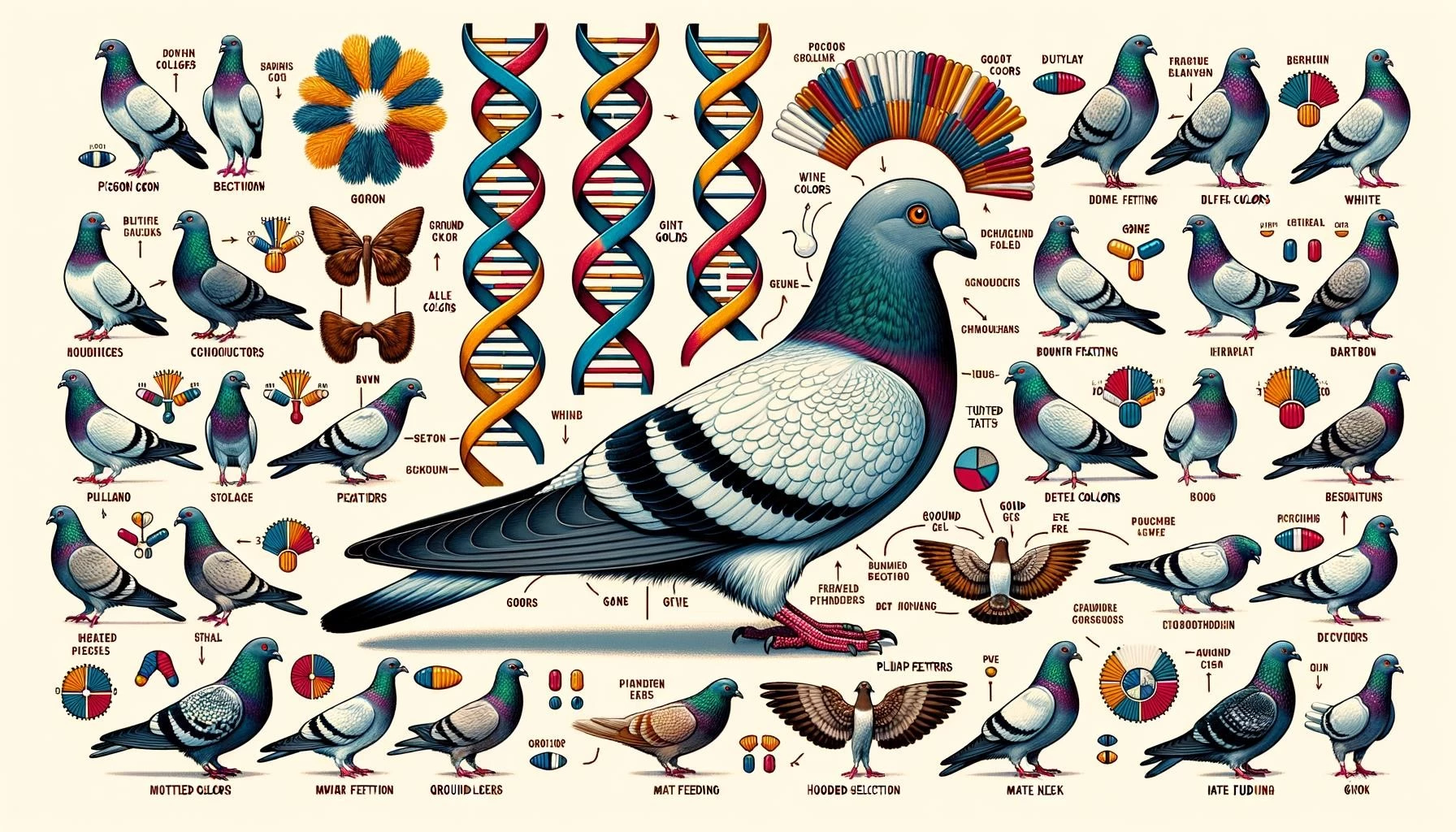Pigeons, with their diverse physical traits and behaviors, provide a fascinating case study for understanding the role of genetics in shaping animal behavior. By enlisting the help of pigeon breeders and conducting genetic studies, researchers have uncovered valuable insights into the genetic basis of various traits and behaviors seen in pigeons. This article will delve into the influence of genetics on pigeon behavior and explore key findings in this field of study.
Key Takeaways
- Pigeons exhibit a wide range of physical traits and behaviors, which are influenced by genetic factors.
- Genetic studies have revealed that similar traits can be found in distantly related pigeons, while closely related pigeons can exhibit significant differences in traits.
- Selective breeding and adaptation to the environment both contribute to the diversity of traits and behaviors seen in pigeons.
The Role of Genetics in Pigeon Traits and Behaviors
Pigeons exhibit an extensive array of physical traits, such as body size, color, patterning, beak size and shape, posture, skeletal structure, vocalizations, flight behavior, and feather placement. These traits are influenced by an intricate interplay between genetic and environmental factors.
Through genetic studies involving hundreds of pigeons representing various breeds, researchers have uncovered interesting patterns. They have found that similar traits can be observed in pigeons that are distantly related, while closely related pigeons can exhibit significant differences in their traits. For example, the English trumpeter pigeon and the German owl pigeon both possess crested head feathers, despite not being closely related. Similarly, the African owl pigeon and the Budapest short-faced tumbler both share short beaks, despite not being closely related.
These findings indicate that genetic factors play a crucial role in shaping pigeon traits. Certain genes may have been preserved in distantly related pigeons, resulting in the appearance of similar traits. On the other hand, closely related pigeons may have undergone genetic divergence, leading to differences in their physical characteristics.
The Role of Selective Breeding in Pigeon Traits and Behaviors
Selective breeding, a process in which specific traits are intentionally bred for, has played a significant role in shaping the diversity of traits and behaviors seen in pigeons. Pigeon breeders have selectively bred pigeons for centuries to achieve specific traits or behaviors that they find desirable.
For example, racing pigeons have been selectively bred for their homing ability over long distances. This fascinating behavior, known as homing, allows pigeons to find their way back to their home loft from unfamiliar locations. By selecting and breeding pigeons with superior homing abilities, breeders have enhanced this behavior over generations, resulting in highly skilled racing pigeons.
Selective breeding has also been instrumental in creating various pigeon breeds with unique physical traits, such as feather color, patterns, and body structure. Breeders have intentionally bred pigeons with certain physical attributes to accentuate those traits. As a result, there are now over 350 pigeon breeds that differ significantly in their appearance and behavior, providing a testament to the power of selective breeding in shaping pigeon diversity.
The Role of Adaptation in Pigeon Traits and Behaviors
In addition to selective breeding, the natural process of adaptation to the environment has also contributed to the diversity of traits and behaviors observed in pigeons. Pigeons have adapted to various habitats and ecological niches across the world, resulting in the emergence of different populations and subspecies.
Through genetic studies, researchers have found that free-living pigeons, such as those commonly found in cities, carry the DNA of racing pigeons. This suggests that some of the traits found in pigeons, especially those residing in urban environments, are the result of adaptation to their surroundings. Urban pigeons have acquired traits that enable them to thrive in human-altered landscapes, such as increased scavenging behavior and enhanced navigational skills in urban environments.
Understanding the genetic basis of these adaptive traits in pigeons can provide valuable insights into the process of adaptation and how organisms respond to changes in their environment. Such knowledge may have broader implications for understanding the genetic basis of adaptation in other animals, including humans.
Conclusion
Pigeons, with their diverse physical traits and behaviors, serve as an excellent model for studying the influence of genetics on animal behavior. Research into pigeon genetics has revealed that genes play a significant role in shaping pigeon traits and behaviors. Selective breeding and adaptation to the environment have also contributed to the incredible diversity observed in pigeon populations. By studying pigeons, scientists can gain a better understanding of the genetic underpinnings of behavior and its role in shaping animal diversity.









